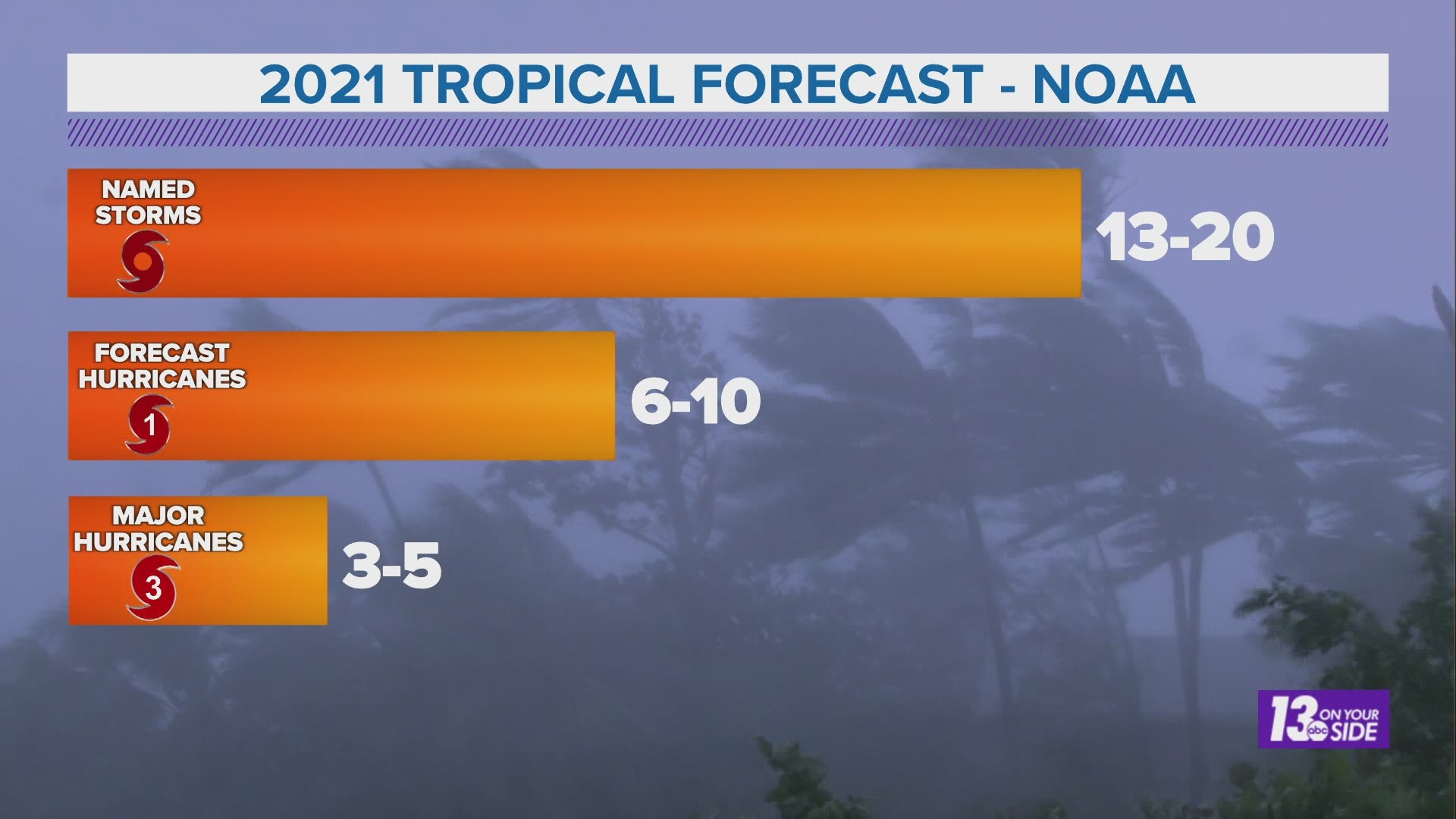JACKSONVILLE, Fla. — NOAA announced its initial outlook for the 2021 Atlantic hurricane season during a national media briefing on Thursday
Speakers addressed the anticipated activity for the 2021 hurricane season and provided information on how to be prepared for the season which is June 1 through November 30.
One of the longest issued seasonal outlooks from Colorado State University was released in early April. CSU Forecasters predict 17 named storms, 8 hurricanes, and 4 major hurricanes.
This information came out right around the same time NOAA released the new seasonal averages for the Atlantic basin. According to the 30 year data from 1991 to 2020, the new averages include 14 named storms, 7 hurricanes, and 3 major hurricanes. The previous Atlantic storm averages, based on the period from 1981 to 2010, were 12 named storms, 6 hurricanes, and 3 major hurricanes.
“This update allows our meteorologists to make forecasts for the hurricane season with the most relevant climate statistics taken into consideration,” said Michael Farrar, director of NOAA’s National Centers for Environmental Prediction. “Our work illustrates the value of NOAA’s investments in next-generation technologies to capture the data that underpins our outlooks and other forecast products. These products are essential to providing the public and local emergency managers with advance information to prepare for storms, and achieving NOAA’s mission of protecting life and property.”
The increase in the averages may be attributed to the overall improvement in observing platforms, including NOAA’s fleet of next-generation environmental satellites and continued hurricane reconnaissance. It may also be due to the warming ocean and atmosphere which are influenced by climate change. The update also reflects a very busy period over the last 30 years, which includes many years of a positive Atlantic Multi-decadal Oscillation, which can increase Atlantic hurricane activity.
“These updated averages better reflect our collective experience of the past 10 years, which included some very active hurricane seasons,” said Matt Rosencrans, seasonal hurricane forecaster at NOAA’s Climate Prediction Center. “NOAA scientists have evaluated the impacts of climate change on tropical cyclones and determined that it can influence storm intensity. Further research is needed to better understand and attribute the impacts of anthropogenic forcings and natural variability on tropical storm activity.”
For the Eastern Pacific and Central Pacific basins the averages over the 1991 - 2020 period do not change. The Eastern Pacific basin will remain at 15 named storms, 8 hurricanes, and 4 major hurricanes. The Central Pacific basin will maintain an average of 4 named storms, 3 hurricanes and 2 major hurricanes.
Hurricane safety and preparedness is critically important before the season begins on June 1. NOAA’s National Weather Service provides resources to prepare for hurricane hazards and real-time updates about active weather systems from the National Hurricane Center at www.hurricanes.gov.

